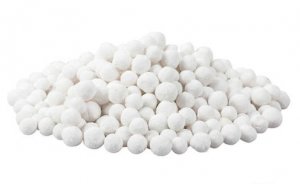Phosphoric Acid and Bioceramics
Phosphoric acid is used to produce Bioceramics. Bioceramics refers to a type of ceramic materials used for specific biological or physiological functions, that is, ceramic materials that are directly used in the human body or directly related to the human body, such as biology, medicine, and biochemistry. As a bioceramic material, it needs to have the following conditions: biocompatibility, mechanical compatibility, excellent affinity with biological tissues, anti-thrombosis, sterilization and good physical and chemical stability. An important bioceramic is Calcium Phosphate Ceramic (CPC)
What is Calcium Phosphate Ceramic (CPC)?
Calcium phosphate ceramics (CPC) is an important type of bioactive ceramic materials. At present, the most researched and applied ones are hydroxyapatite (HA) and tricalcium phosphate (TCP).
Calcium phosphate ceramic contains two components: CaO and P2O5, which are important inorganic substances that constitute the hard tissues of the human body. After being implanted in the human body, the surface of the ceramics can be bonded to the human body tissues to achieve complete affinity.
Among them, HA is very similar to human bones and teeth in composition and structure, has high mechanical properties, and has low solubility in human physiological environments.
TCP has good binding to bone, no rejection reaction, and its solubility in aqueous solution is much higher than that of HA. It can be slowly degraded and absorbed by body fluids, providing abundant calcium and phosphorus for the growth of new bones and promoting the growth of new bones.
In addition to these two, calcium phosphate bioceramics also include degradable and absorbing zinc-calcium-phosphorus oxide ceramics (ZCAP), zinc sulfate-calcium phosphate ceramics (ZSCAP), aluminum calcium phosphate ceramics (ALCAP) and iron-calcium- Phosphorus oxide ceramics (FECAP), etc.
Intermedia product: Tricalcium Phosphate
- Calcium Phosphate Tribasic
- Chemical Formula: Ca3(PO4)2
- Molecular weight: 310
- CAS: 7758-87-4
Production methods:
Industrial grade TCP:
- Ca10F2(PO4)6 + H3PO4+ H2O → Ca(H2PO4)2?H2O + HF
- Ca(H2PO4)2.H2O → Ca(PO3)2 + H2O
- Ca10F2(PO4)6 + Ca(PO3)2+H2O → Ca2P2O7 + HF
- Ca10F2(PO4)6 + Ca2P2O7 + H2O → Ca3(PO4)2 + HF
Food / Medical grade TCP:
Food/Medical Grade TCP needs high-purity raw materials, so food grade phosphoric acid and Calcium oxide is used to make such TCP.
H3PO4 + CaO → Ca3(PO4)2 + H2O
β-tricalcium phosphate
Currently widely used biodegradable ceramic β-tricalcium phosphate (abbreviated as β-TCP) is a trigonal crystal system with a calcium-phosphorus atomic ratio of 1.5, which is a high-temperature phase of calcium phosphate.
The biggest advantage of β-TCP is that it has good biocompatibility, and it fuses directly with bone after being implanted in the body, without any local inflammatory reaction and systemic side effects.
The calcium to phosphorus ratio plays an important role in determining the solubility and absorption tendency in the body. Therefore, compared with HA, TCP is easier to dissolve in the body, and its solubility is about 10-20 times higher than that of HA.
The commonly used β-TCP can be gradually degraded when implanted in the body, and the degradation rate may vary due to its surface structure, crystal configuration, porosity and implanted animals, and its strength often decreases with degradation. It has been proved that changing the pore size and the purity of the material can slow down the degradation rate and increase the biological strength.
Compared with other ceramics, β-TCP ceramics are more similar to the nature and structure of human bones and natural teeth. In the living body, the dissolution of hydroxyapatite is harmless, and it relies on supplementing calcium and phosphate ions from body fluids to form new Bone can produce reactions such as decomposition, absorption and precipitation at the bone joint interface to achieve a firm bond.
The disadvantage of β-TCP ceramics is that the mechanical strength is low and cannot withstand strong impacts. Mixing β-TCP with other materials to make dual-phase or multi-phase ceramics is one of the ways to improve its mechanical strength.
It is generally believed that the bone conduction effect of biphasic calcium phosphate (BCP) is better than that of a single HA or TCP. It can combine the high strength of HA and the good biodegradability of TCP, and the chemical composition is similar to bone.
Some experts inoculated bone marrow stroma cells (BMS) on the porous BCP to repair the 21mm long canine femoral segmental defect successfully. Studies have found that culturing BMS on BCP can better express the characteristics of osteoblasts, indicating that BCP is more suitable for matrix materials for bone tissue engineering.

